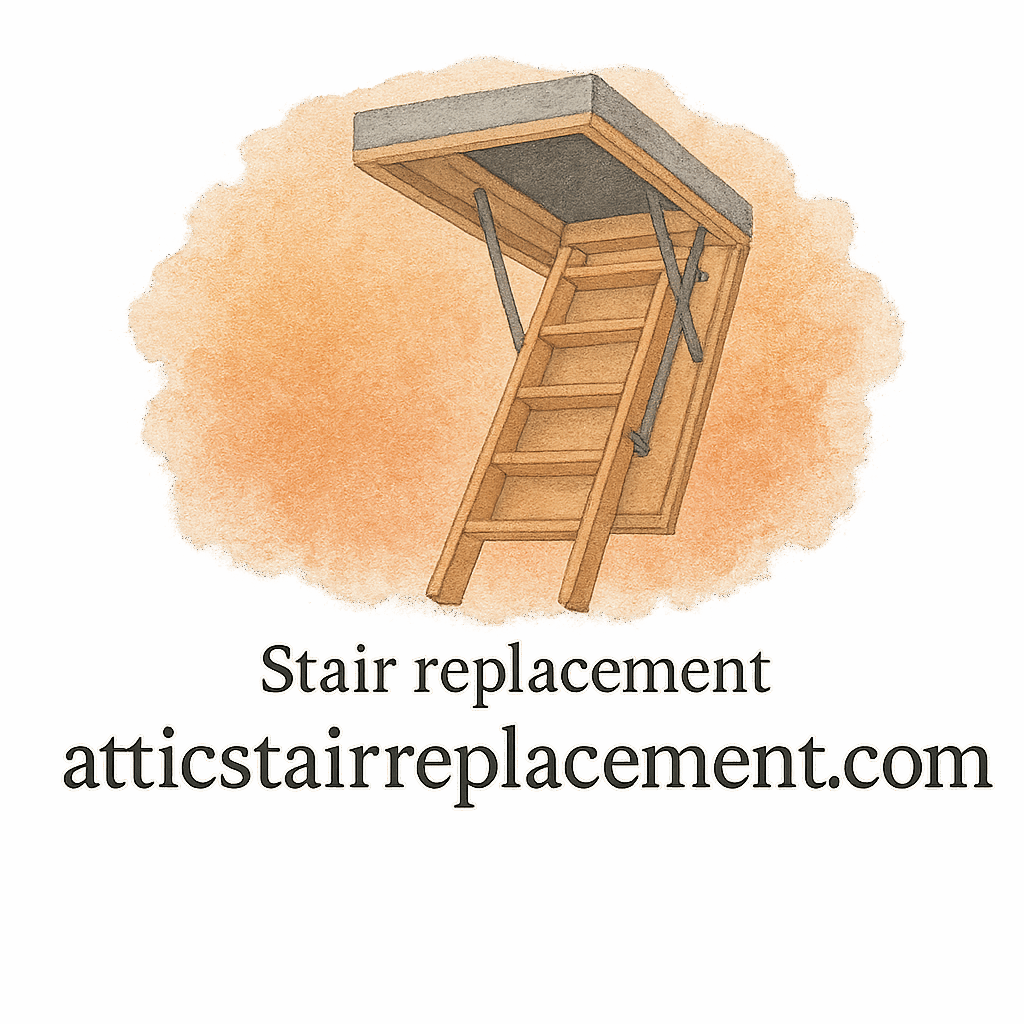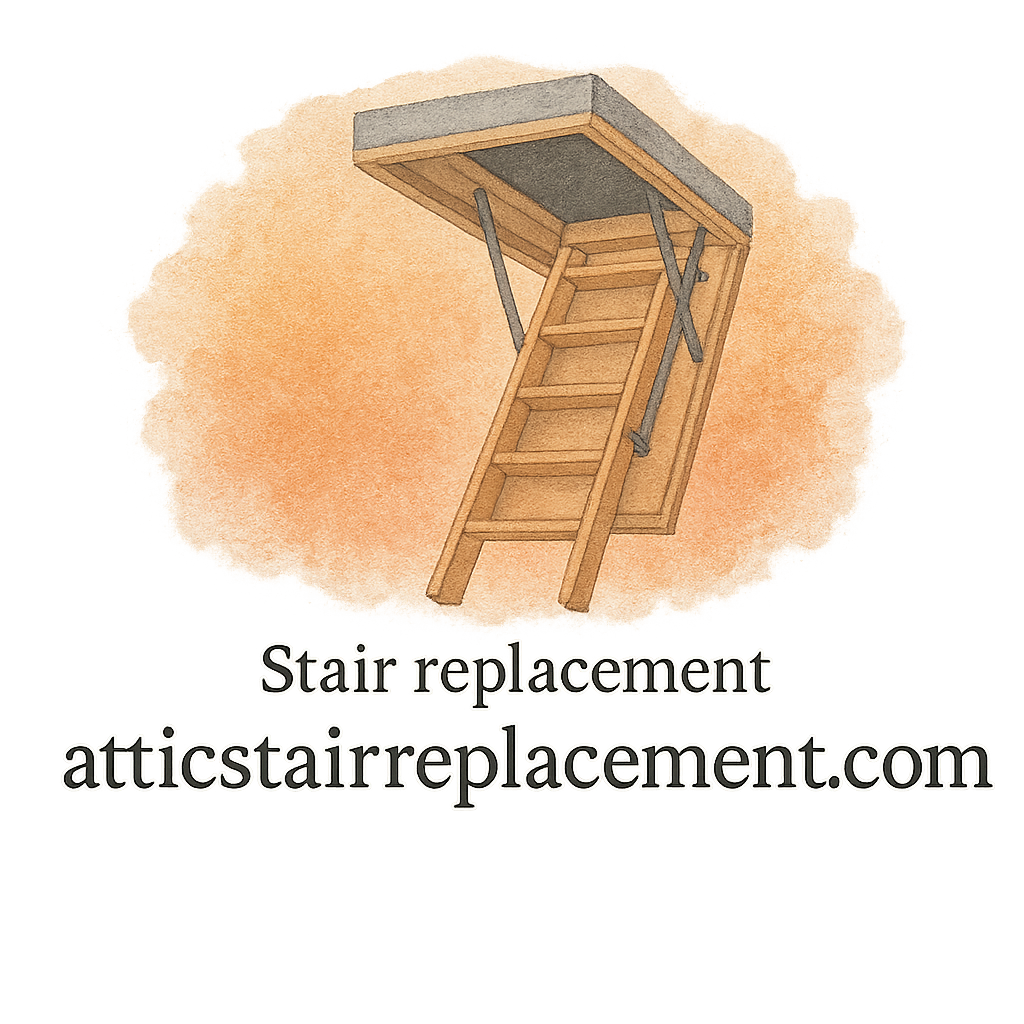Introduction
Thinking about replacing your attic stairs on your own? You’re not alone. Many homeowners love the idea of tackling a DIY project—it feels empowering, it saves money (at least in theory), and it gives you bragging rights. But before you grab your toolbox and start unscrewing hinges, there are some serious warnings you need to consider.
DIY attic stair replacement isn’t just another weekend project like painting a room or changing a faucet. It involves structure, safety, and compliance. If done wrong, the “savings” could quickly turn into a nightmare of hidden costs, injuries, or even structural damage.
In this guide, we’ll break down five crucial warnings before attempting a DIY attic stair replacement—and what you can do instead to keep your home safe and your wallet happy.
Why Homeowners Consider DIY Attic Stair Replacement
The Temptation of Saving Money
Let’s be real—saving money is the number one reason most people think about DIY attic stair replacement. Hiring a contractor can feel expensive, and YouTube makes it look easy. But while you might save a few bucks upfront, hidden mistakes can cost you much more down the road.
The Appeal of a Quick Home Project
Many homeowners see this as a small project—unscrew the old stairs, pop in the new set, and call it a day. The reality? It’s more like remodeling a hidden doorway to your home. Cutting into ceilings, aligning frames, and securing heavy-duty ladders isn’t a walk in the park.
For more insights, check out home improvement guides that explain why some jobs look simple but require careful planning.
Warning #1: Hidden Structural Risks
Ceiling Joists and Load Bearing Concerns
When you remove your old attic stairs, you’re cutting into your ceiling joists. Get it wrong, and you could weaken your home’s structure. That’s not just about crooked stairs—it could affect the integrity of your ceiling.
Improper Cuts That Lead to Costly Repairs
A single wrong cut can lead to cracks, sagging, or costly repairs that far exceed the cost of professional installation. This is why professionals often stress following an expert guide before taking action.
Warning #2: Safety Hazards You Might Overlook
Risk of Falls During Installation
Climbing ladders with tools in hand, balancing heavy frames, and working overhead—it’s a recipe for falls if you’re not experienced. Safety gear isn’t optional here; it’s essential.
Heavy-Duty Equipment Handling
Most attic stairs are not light. They’re bulky, awkward, and require more than one person to handle safely. Trying to go solo could leave you with injuries or damaged stairs before you even get them in place.
If safety is your concern, browse safety tips to prevent common mistakes during attic projects.
Warning #3: Hidden Costs of DIY Installation
Tools and Materials You Didn’t Budget For
You’ll need more than just a screwdriver—think power saws, brackets, safety gear, insulation, and finishing materials. These hidden costs add up fast.
Mistakes That Lead to Replacements
Make one measurement error, and you might have to buy a whole new attic stair kit. Suddenly, that “budget-friendly DIY” turns into double the expense.
Learn how to avoid overspending by checking budget planning guides before you commit.

Warning #4: Job Quality and Long-Term Durability
Why Expert Installation Lasts Longer
Contractors not only know how to install stairs correctly, but they also understand how to reinforce them for long-term durability. A wobbly installation can quickly become a hazard.
Common Mistakes That Reduce Lifespan
Improper alignment, poor fastening, or skipping small finishing steps can shorten the life of your attic stairs. Instead of lasting decades, you may be looking at repairs within a year.
For product insights, browse honest product reviews before making a decision.
Warning #5: Building Codes and Compliance Issues
Permits and Legal Requirements
In many areas, attic stair replacement isn’t just a personal choice—it’s subject to local building codes. Without the right permit, you could face fines or complications when selling your home.
Potential Home Insurance Problems
Insurance companies may deny claims if they find out your attic stairs were DIY-installed and not code-compliant. That means you’re on the hook if anything goes wrong.
Check trusted contractor advice to understand your local regulations.
Alternatives to DIY Attic Stair Replacement
Hiring a Contractor for Quality Assurance
Yes, hiring a contractor costs more upfront. But the peace of mind, safety, and quality are often worth every penny. Plus, you avoid the risks of injury and non-compliance.
Following Expert Advice and Guides
If you’re determined to handle it yourself, start with reliable DIY installation guides and expert resources. These can help you reduce mistakes and improve your chances of success.
How to Prepare if You Still Want DIY Installation
Choosing Durable Materials
Pick strong, durable stairs designed for heavy use. Look for heavy-duty options that can handle frequent access without wearing out.
Step-by-Step Guides and Resources
Don’t go in blind. Follow detailed step-by-step guides and cross-reference multiple sources. This will help you avoid common DIY mistakes.
Balancing Cost, Safety, and Quality
The truth is, DIY attic stair replacement can be done—but it’s not for everyone. The warnings are real: structural damage, safety risks, hidden costs, durability concerns, and code compliance issues all make this project trickier than it seems.
If you’re looking for a safe middle ground, consider doing the prep work yourself and hiring a pro for the actual installation. That way, you save money without sacrificing safety or quality.
Conclusion
DIY projects can be rewarding, but DIY attic stair replacement is one of those tasks where the risks often outweigh the benefits. From hidden structural issues to safety hazards and legal concerns, this isn’t just another “weekend warrior” job.
If you decide to move forward with a DIY approach, arm yourself with knowledge, follow expert advice, and never compromise on safety. And if you’d rather avoid the stress? A qualified contractor ensures your attic stairs are safe, durable, and compliant—giving you peace of mind for years to come.
For more helpful resources, check out:
FAQs
1. Is DIY attic stair replacement really dangerous?
Yes, especially if you don’t have carpentry experience. Risks include falls, structural damage, and costly mistakes.
2. Can I install attic stairs alone?
It’s strongly discouraged. Attic stairs are heavy and awkward—at least two people are needed.
3. How much does professional attic stair replacement cost?
On average, between $300–$800 depending on the model and labor.
4. What are the most common DIY mistakes?
Incorrect measurements, improper fastening, and ignoring safety protocols.
5. Do I need a permit to replace attic stairs?
In many areas, yes. Always check your local building codes first.
6. How long do attic stairs last?
With proper installation and maintenance, quality attic stairs can last 20–30 years.
7. What’s the best alternative if I don’t want to DIY?
Hire a licensed contractor or follow trusted expert guides for safer results.


